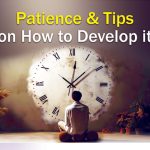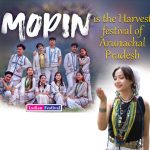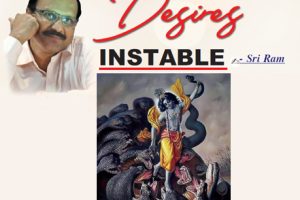INVOCATION
Generally before commencing the study of the Bhagavad Gita text, it is customary to study the meditation verses on the Gita called Gita Dhyana Slokas. We do not know who composed them. It is a set of 9 verses recited as invocation, dedication and prayer to the Gita Knowledge and its glory. For our purposes let us take up one of the verses and understand its meaning.
Prapanna paarijaataaya
totra vetraika paanaye |
Jnaanamudraaya krishnaaya
geetaamrita duhe namah ||
Salutations to Bhagvan Krishna, with His right hand in Jnana Mudra, the bestower of all needs to those who surrender to Him completely, the milker of the divine nectar of the Bhagavad Gita, the holder of the whip in one hand for driving the cows.
This verse describes Sri Krishna with His right hand held in Jnana Mudra – in knowledge posture – wherein the thumb is joined to the forefinger and all the other three fingers are stretched out, the gesture symbolizing knowledge. This is a remarkable concept in Indian Vedantic philosophy and spirituality which indicates that our body postures have psychological counter parts. As the mind is, so is the body; bodily expressions being the manifestation of the working of the mind or the effect of psyche. This is what we call ‘body language’ in the modern business school terminology. It means that there is nothing in this world so purifying as Knowledge.
We offer our obeisance to Sri Krishna who is the embodiment of Knowledge and who imparts such knowledge to all those who seek it from Him. This is what Arjuna does in the Gita. That knowledge is the Supreme Knowledge – the knowledge of the Absolute Reality, the knowledge of Dharma, the knowledge of righteousness, the knowledge about the right way of living.
With this prayer let us start our journey in the Gita Ganga and crave for Sri Krishna’s enlightenment.
PREAMBLE
The 1st Chapter in the Gita introduces the scene, the setting, the circumstances and the characters involved determining the reasons for the espousal of the Bhagavad Gita. The scene is the sacred plain of Kurukshetra. The setting is a battlefield. The situation is that the war between the two clans of brothers, the Kauravas and the Pandavas is about to begin.
The main characters are Bhagavan Sri Krishna and the valiant Arjuna from the side of Pandavas and Duryodhana from the side of Kauravas in the midst of large armies on both the sides led by their respective commanders.
After noticing the principal warriors on both the sides, Arjuna falls into the mood of deep dejection and melancholy due to the fear of destruction of friends and relatives in the course of the impending war leading to his resolve not to take up arms against his kith and kin. This is the subject matter of this Chapter and hence it is called “Arjuna Vishaada Yogah: The Yoga of the Despondency of Arjuna
The question
Dhritaraashtra Uvaacha
dharmakshetre kurukshetre
samavetaa yuyutsavah
maamakaah paandavaashchaiva
kimakurvata sanjaya // 1 //
Dhritarashtra said
What did the sons of Pandu and also my people do when they assembled together on the holy field of Kurukshetra, eager to fight, O Sanjaya?
In the entire Gita this is the only uttering of the blind king, Dhritarashtra. All the remaining verses are Sanjaya`s report to him about the happenings at the battlefield of Kurukshetra just before the war.
The battlefield is called dharmakshetra or the sacred field because The Lord who is the protector and embodiment of Dharma was actively present in it. Kurukshetra means the field of the Kurus, a leading clan of that era. This question of Dhritarashtra exhibits a sense of anxiety in him on two counts. If Pandavas decide not to undertake the war, his sons will automatically get the kingdom and in such an event, the stigma of waging the unrighteous war might not stick to his covetous and deceitful sons. If his sons decide not to wage the war they will lose the kingdom that was earlier acquired by them through deceit, because of which they will be as good as dead. Such was the anxiety in the king’s mind because of the greatness and spiritual atmosphere of the field of battle.
Mamakaah: My people. And ‘Pandu’s sons’. – This sort of divisive reference to one and the same family members indicates the absence of the sense of familiarity and closeness with regard to the Pandavas and thereby betrays hostility towards them.
This sense of a pair of opposites ‘mine-ness’ and ‘not mine-neness’ is the result of ahamkara or `I – ness’ which is the source of all evil. The conflict between the two
cousin groups represents the clash between two sets of values of life – one standing for virtue, justice and righteousness staking a legitimate claim for the kingdom lost through deceit and treachery and the other for vice, injustice, greed, hunger for power and the foul means employed to justify the ends. It indirectly indicates that life itself is a battle between good and evil.

















Add Comment